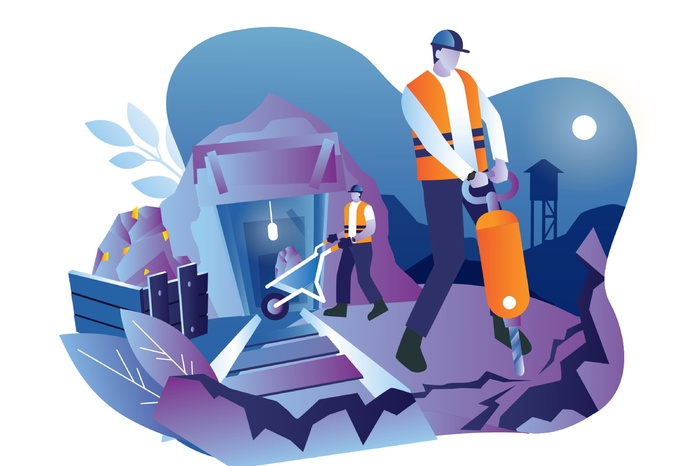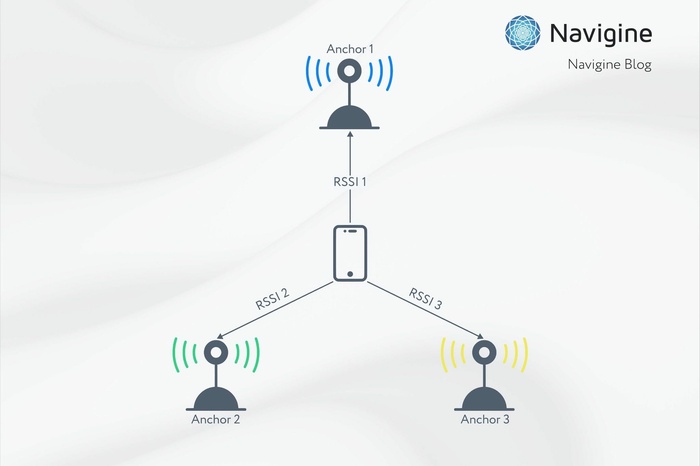Source - Hurca!™
Asset tracking is vital for a company's effective performance. Ongoing asset monitoring allows companies to minimize equipment losses and reduce downtime costs. Modern asset tracking IoT solutions improve occupational safety, boost profit, and rationalize business processes.
What is IoT?
IoT or Internet of Things is a system of interrelated equipment, machines, and objects connected over the power of the Internet. In other words, IoT is a network of devices that work without human intervention. At present, there are more than 10 bln devices in the world involved in the IoT sphere and this number is constantly growing. According to statistics, by 2025 the world’s Internet of Things will have exceeded a total value of $1.5 trillion.
IoT is a multi-technology field. One of those technologies uses special sensors which transmit information to servers using different means of communication, including Bluetooth, Wi-Fi, RFID, and others. All the data collected on the server is processed by the software and after that is directed to the end users.
As one of the key components in the 4th Industrial revolution, Internet of Things has become an essential extension of business processes in organizations with the potential to reduce a company's expenses.
Advantages of IoT asset tracking
- Better asset management. The IoT asset tracking system monitors all work processes and provides detailed analysis of each asset.
- Accurate localization of assets in real-time. The system allows small and medium-sized enterprises to gather data that earlier was available only for large companies.
- More accurate evaluation of equipment efficiency. The collection of digital log data in the system can highlight equipment that breaks down more often.
- Enhancing work processes with new technologies. For instance, the tracking system can automatically inform technicians of equipment failure.
Technologies for asset tracking
Three key elements are used for asset tracking: a tracking device, technology, and software for ensuring remote process management. If we consider the IoT-based asset tracking technologies, the most common ones are the following: BLE, UWB, and Wi-Fi.
BLE
The given technology is applied for tracking the Bluetooth Low Energy protocol that works much faster than classical Bluetooth. Positioning is realized by beacons installed in different parts of buildings or on tracked objects. In the process of work, beacons resend signals which are detected by readers and sent for processing to the server.
The BLE system is compatible practically with any computer and smartphone. Beacons are rather cheap and consume little energy, so they can be used for low-budget solutions based on the existing infrastructure.
UWB
The Ultra Wideband technology maintains a high data transmission rate and ensures high accuracy of asset positioning of up to 30 sm. While organizing asset tracking, objects are equipped with special tags for sending high-frequency impulses. Receiving devices detect signals and redirect them to the server for further processing.
The system is characterized by a good anti-interference ability, a wide range of scalability by speed, a possibility of exact asset localization and tracking at enterprises. After implementing, it guarantees secure data protection and provides power cost savings.
Wi-Fi
The technology allows tracking equipment in real-time, building interactive maps, tuning notifications for the staff, preventing the collisions of vehicles. The history of movements is stored in the system and data is displayed in the form of analytical reports.
Wi-Fi tracking is performed thanks to several components:
- Wi-Fi receiving devices (trackers or smartphones);
- Antennas, routers for delivering data to the server and exchanging it between the tags on the equipment;
- Data processing software on the server.
The already existing infrastructure can be used for tracking assets. The technology offers a high range of signal distribution and does not require high energy costs. If necessary, it can be easily integrated with other positioning systems.
IoT asset tracking application
Flexibility is considered the main benefit of IoT. The Internet of Things can be adapted to various spheres of activity and variants of application in business. IoT asset tracking software can be successfully used in logistics, trading, education, medicine, and other spheres.
Logistics and warehousing
The Internet of Things provides managers with detailed information on asset location in warehouses. The asset tracking IoT solution implemented at the warehouse makes it possible to:
- Track goods, equipment, vehicles in real-time.
- Get data on the vehicle traffic (forklift tracking).
- Create analytical reports on objects and time of their use.
- Automate warehousing operations.
The system makes the warehouse performance more effective and safe. It monitors all business processes and delivers notifications about emergencies or accidents. The beacons, installed on vehicles, allow preventing collisions or running people over in tight spaces.
Industry
Using IoT in the industry opens up unlimited opportunities for equipment tracking. Asset management assists in tracking, systematizing, and fast searching for any pieces of equipment used in the operation by the company. The system gives exact data on asset location in real-time, as well as the time of their exploitation during the day. The platform helps to detect lost or broken equipment, easily find lost assets, and remove surpluses of capital costs.
It should be noted that the Internet of Things provides the efficient planning of the company’s performance, taking into account the use of assets. Moreover, the implementation of the asset tracking system allows minimizing emergencies and timely reaction to them.
Healthcare
When tracking medical equipment, hospitals can boost the quality of customer service and reduce waiting time for patients. The system lets the hospital management know where the hospital assets are at any time and how they move. The Internet of Things, together with the Real Time Location System for hospitals, helps to control any asset, including diagnostic devices, wheelchairs, emergency vehicles, etc. The system quickly detects the location of an asset and informs the staff which part of the hospital it is located in.
Tracking equipment in hospitals, using IoT, reduces costs on lost or broken devices. The platform makes it possible to create and adjust analytical reports on asset movements, increase operational efficiency, and optimize logistics inside medical institutions.
Retail and shopping centers
Tracking in shopping centers can be used for monitoring shopping carts, forklifts, refrigerators, tills, and other equipment. Thanks to this, enterprises get the possibility to improve the coordination of internal processes and ensure a higher quality of customer service. The implementation of IoT in stores for monitoring assets gives some significant advantages:
- Reducing the number of thefts and expenses on purchasing new equipment;
- Increasing client loyalty;
- Reducing the time for searching objects;
- Optimizing the work of shopping centers and equipment arrangement inside premises.
Navigine focuses on developing modern tools for indoor positioning and asset monitoring. Based on our software product Navigine Tracking, we can offer your business an effective asset tracking system suitable for any company.



